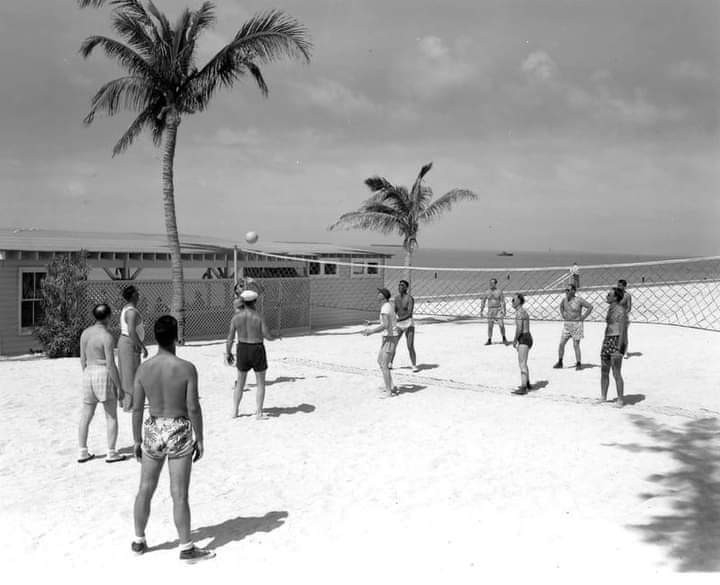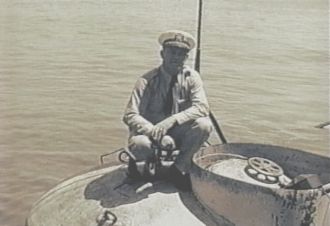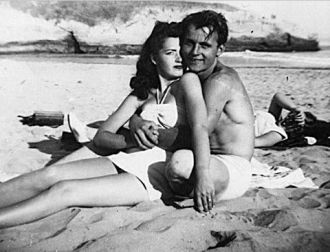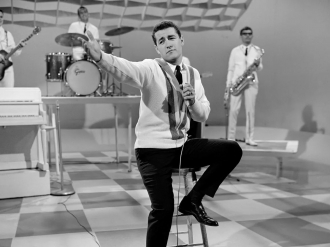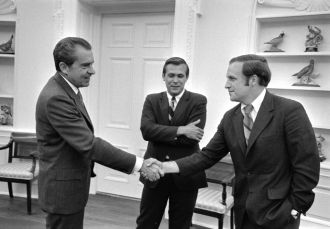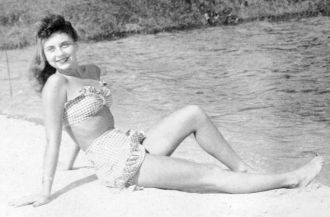President's advisors play volleyball in Key West Florida, March of 1951. US government photo courtesy of the Truman Presidential library.
Presidential advisors play volleyball at Key West in March 1951. Allan Rockwell McCann, vice admiral retired, is on the far left.
Vacationing with the president in Florida.
Members of President Harry S. Truman's vacation party play volleyball on the beach in Key West, Florida. Team "A" was: Mr. R. R. Lapham, Lieutenant Commander William Rigdon, Mr. Dick Flohr, Lieutenant Commander E. P. Roberts, General Harry Vaughn, Colonel Cornelius Mara and Mr. Gerald Behn. On the "B" team was: Henry Nicholson, W. Averell Harriman, Irving Perlmeter, Admiral Robert Dennison, Allan McCann, VAdm (ret), M.S. Mileski and M.L. Gies. From: Naval Photo Center, sent to the Truman Library by the National Archives. Original 4 X 5 negative.
Date(s)
March 9, 1951
People in photo include: William Rigdon, Dick Flohr, E. P. Roberts, Harry Vaughn, Gerald Behn, Henry Nicholson, W. Averell Harriman, Robert Dennison, M. S. Mileski, and M. L. Gies
Vacationing with the president in Florida.
Members of President Harry S. Truman's vacation party play volleyball on the beach in Key West, Florida. Team "A" was: Mr. R. R. Lapham, Lieutenant Commander William Rigdon, Mr. Dick Flohr, Lieutenant Commander E. P. Roberts, General Harry Vaughn, Colonel Cornelius Mara and Mr. Gerald Behn. On the "B" team was: Henry Nicholson, W. Averell Harriman, Irving Perlmeter, Admiral Robert Dennison, Allan McCann, VAdm (ret), M.S. Mileski and M.L. Gies. From: Naval Photo Center, sent to the Truman Library by the National Archives. Original 4 X 5 negative.
Date(s)
March 9, 1951
People in photo include: William Rigdon, Dick Flohr, E. P. Roberts, Harry Vaughn, Gerald Behn, Henry Nicholson, W. Averell Harriman, Robert Dennison, M. S. Mileski, and M. L. Gies
Date & Place:
at Key West, Florida in Key West, Florida United States

